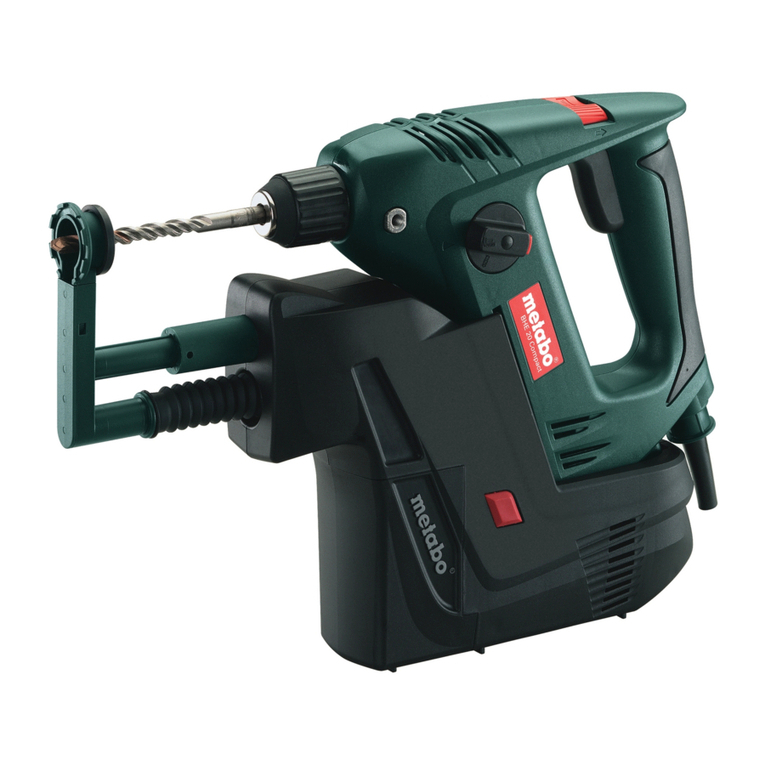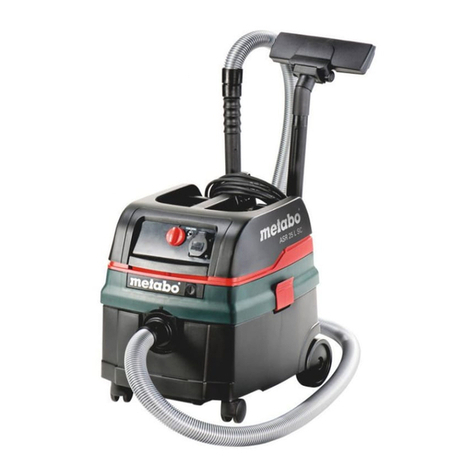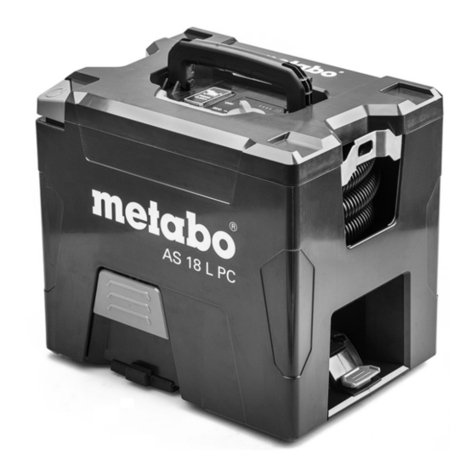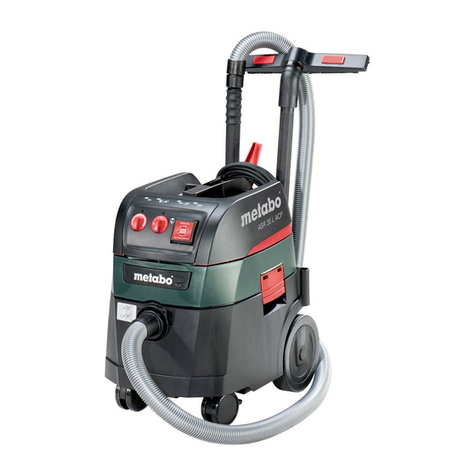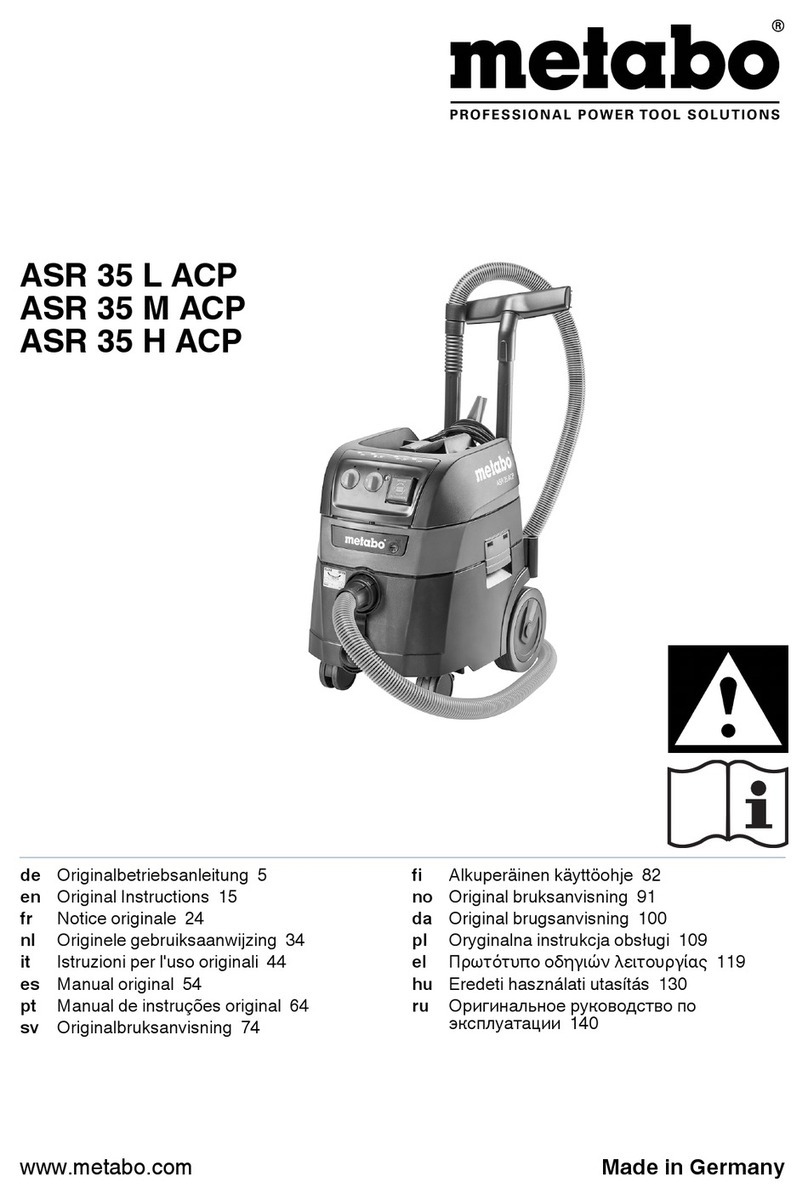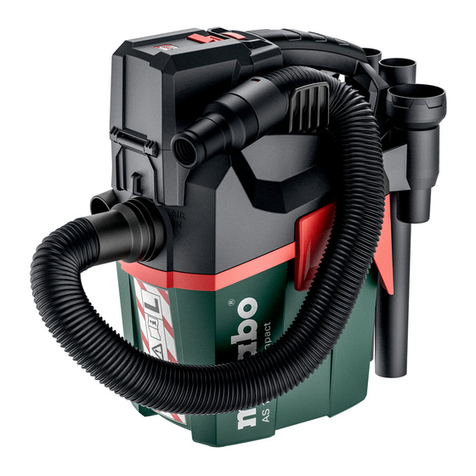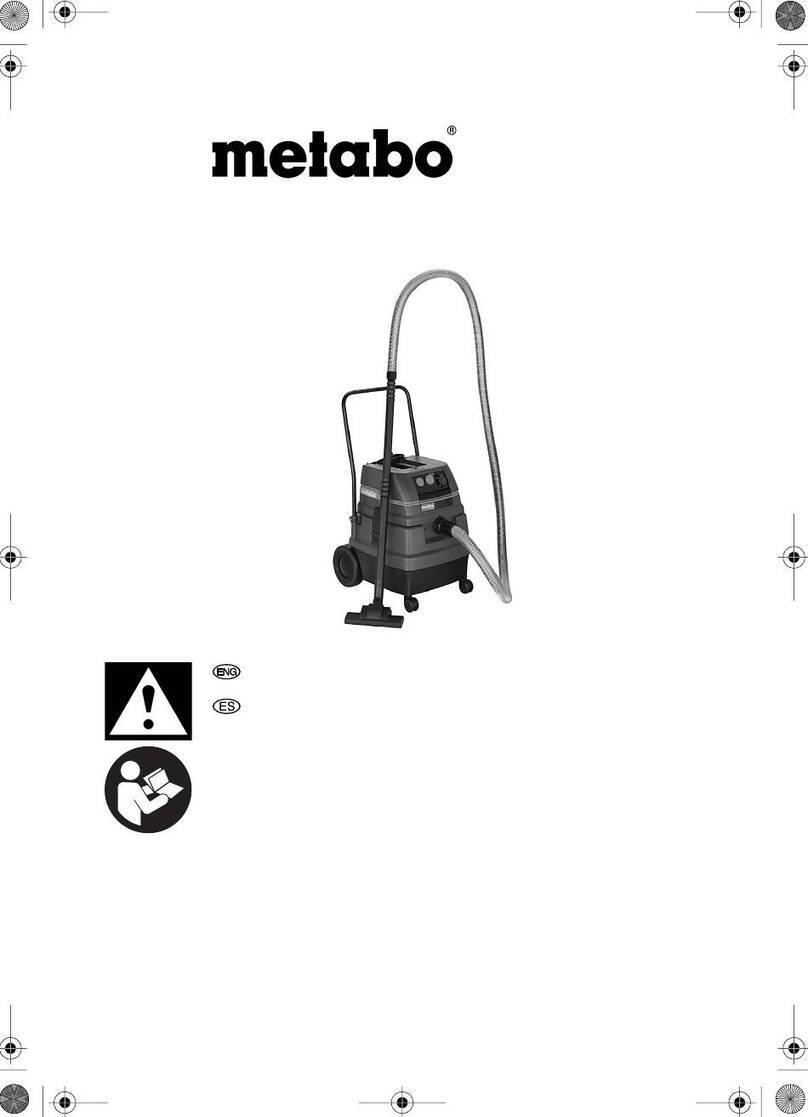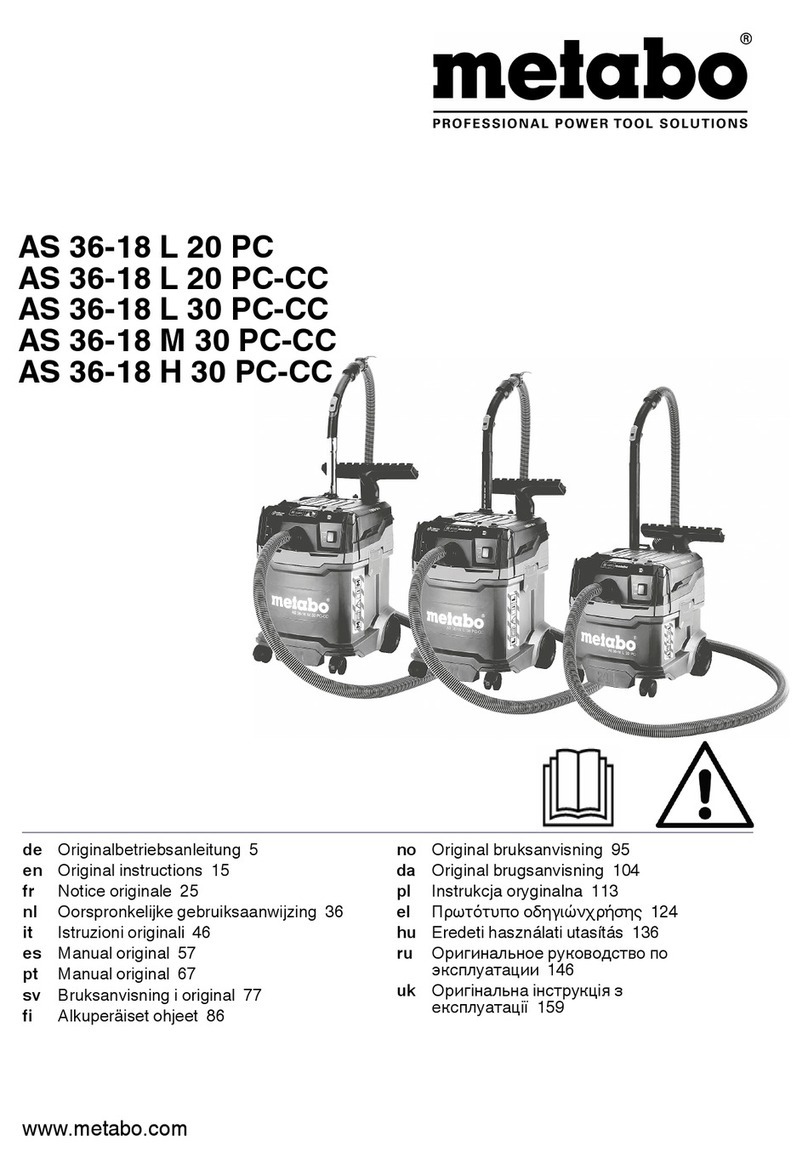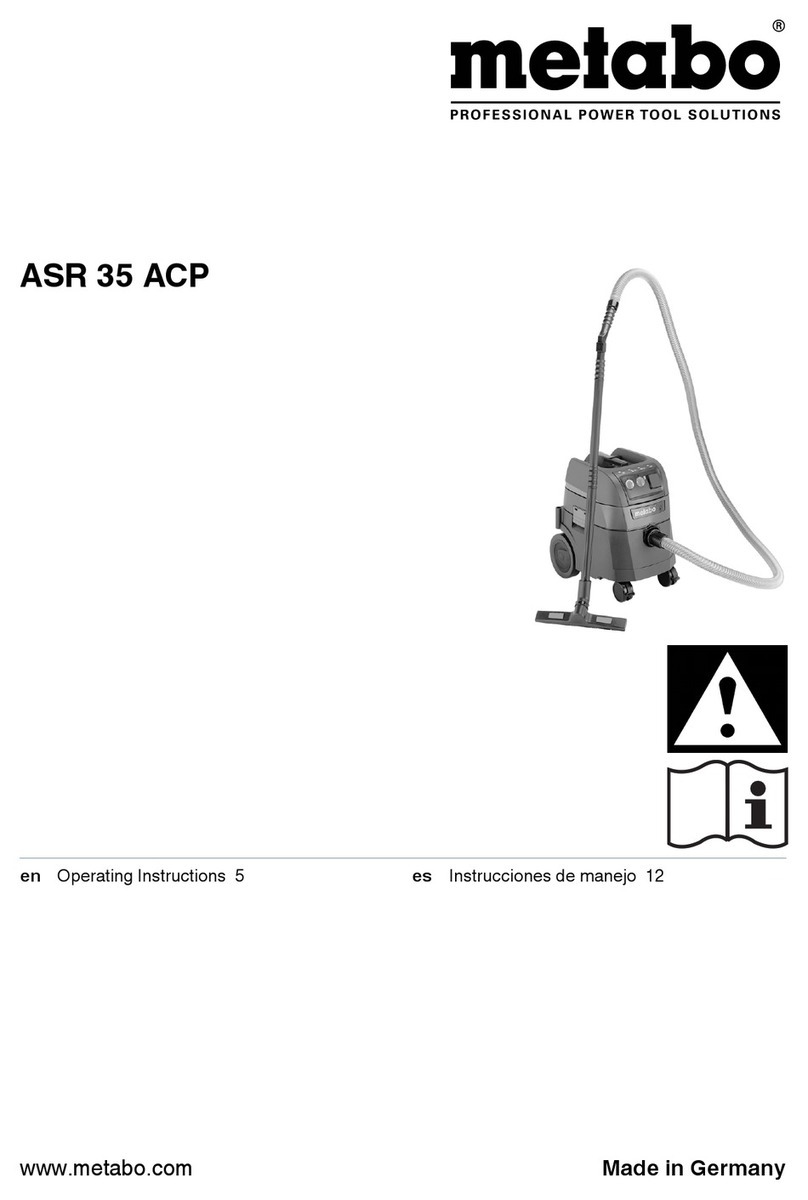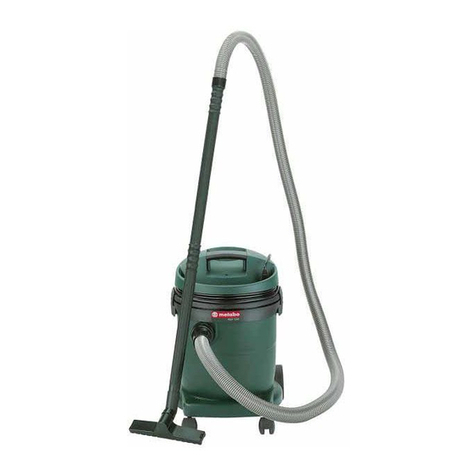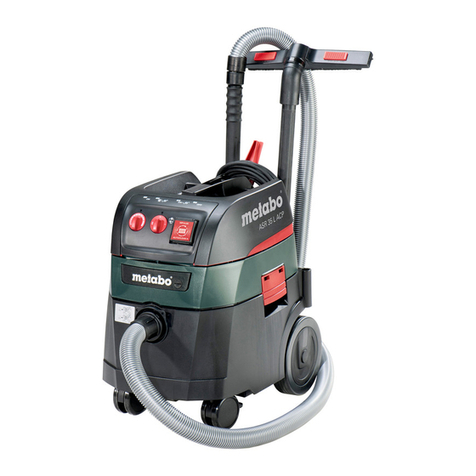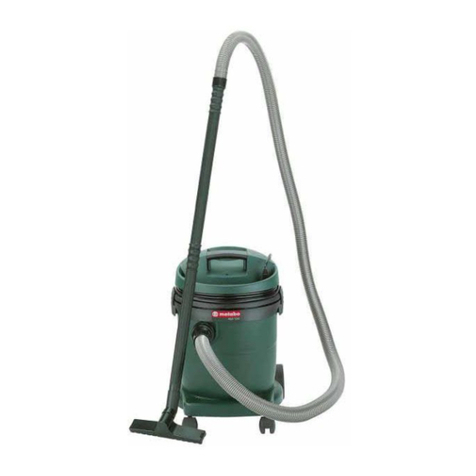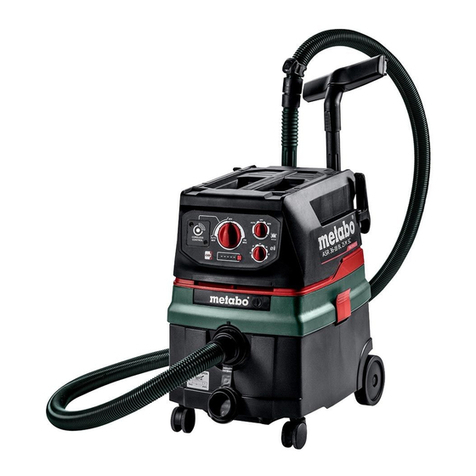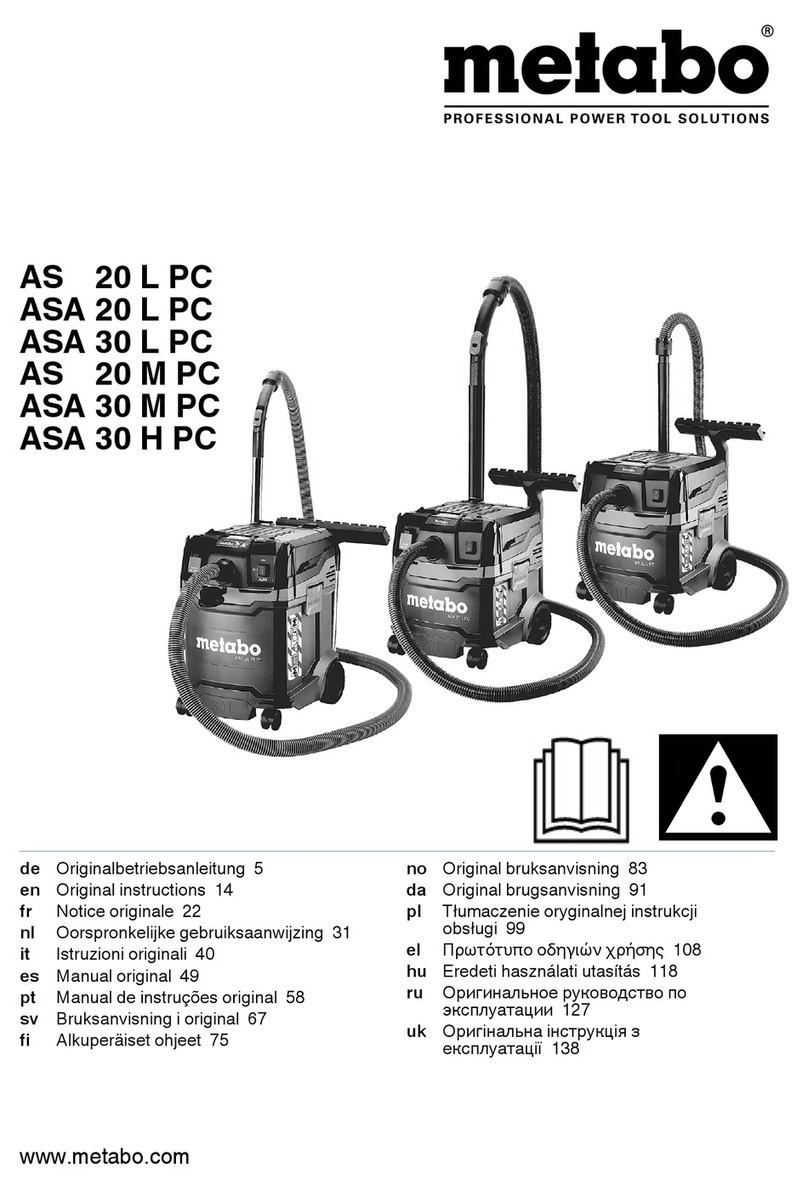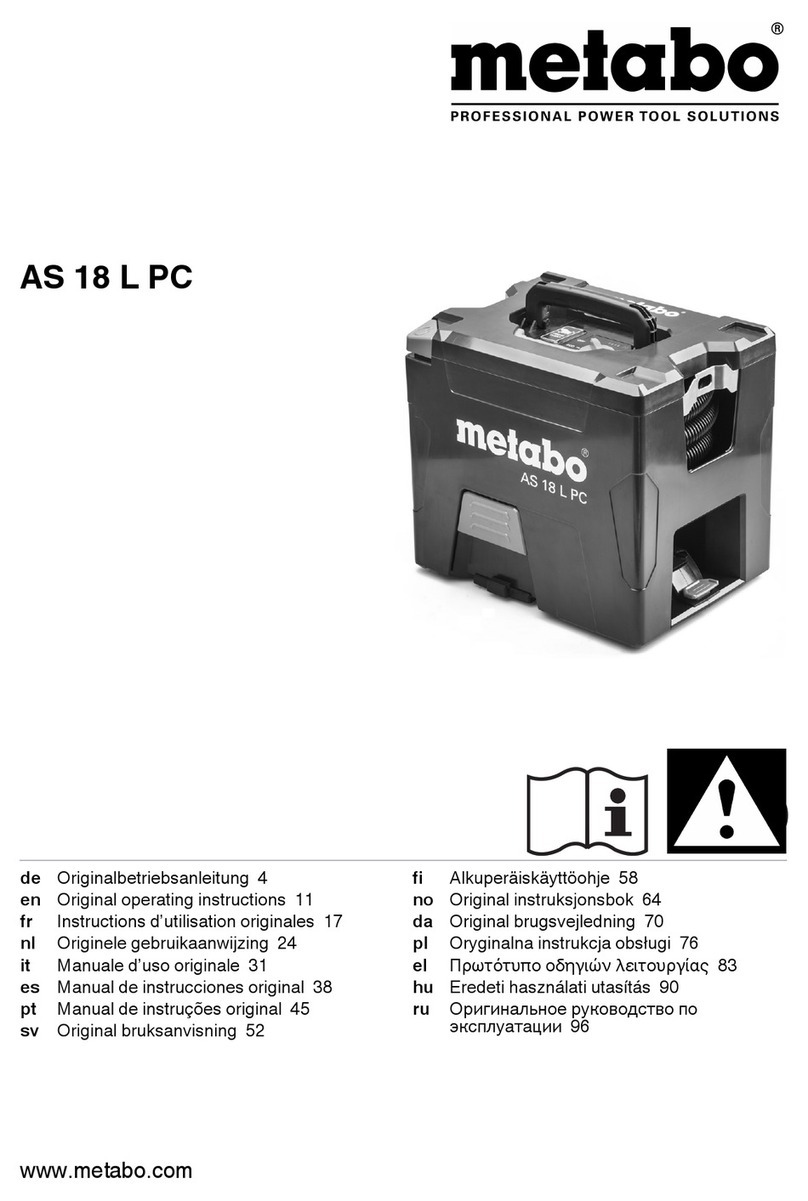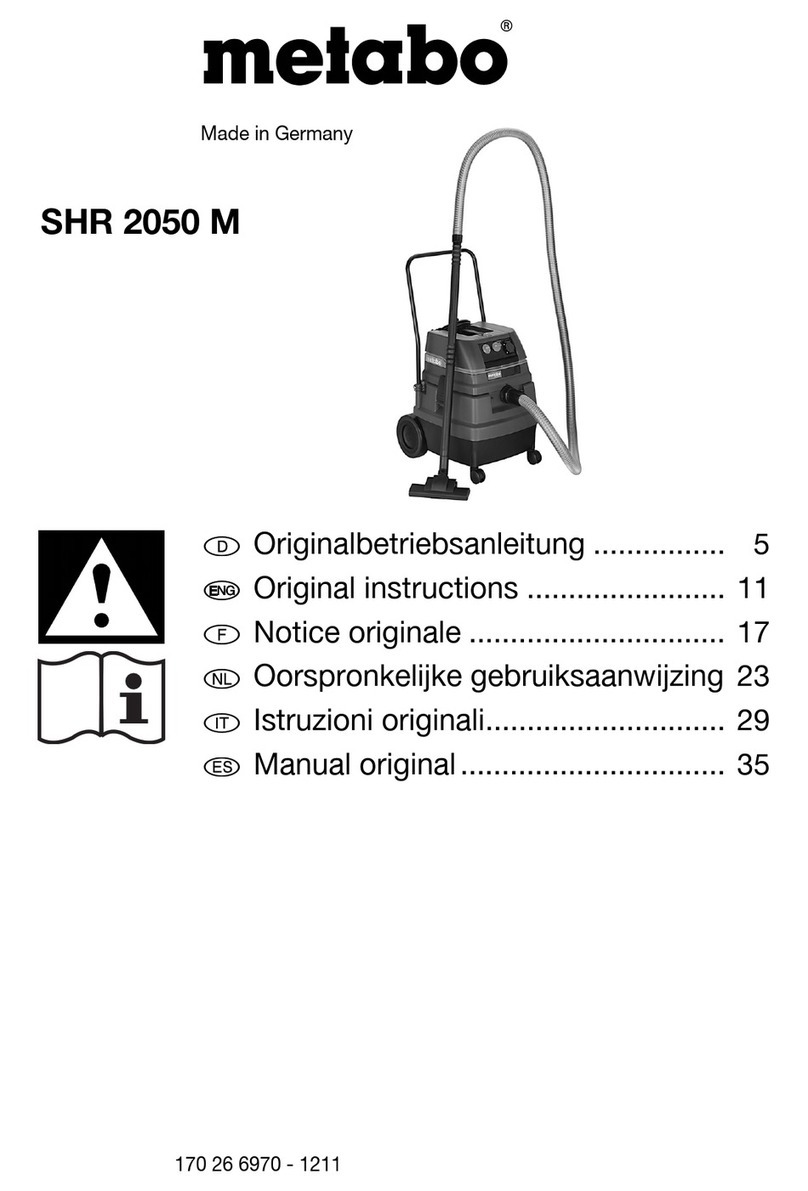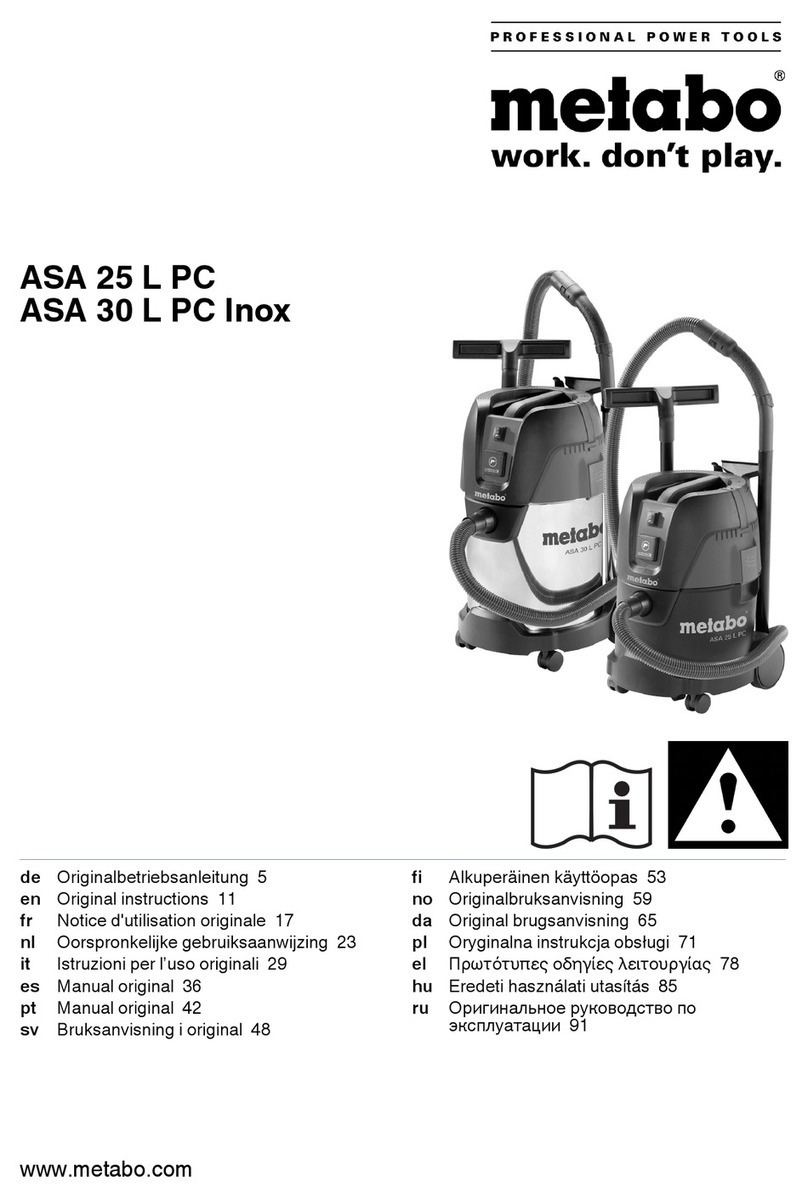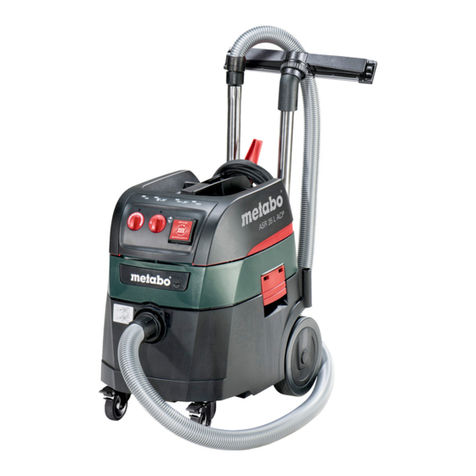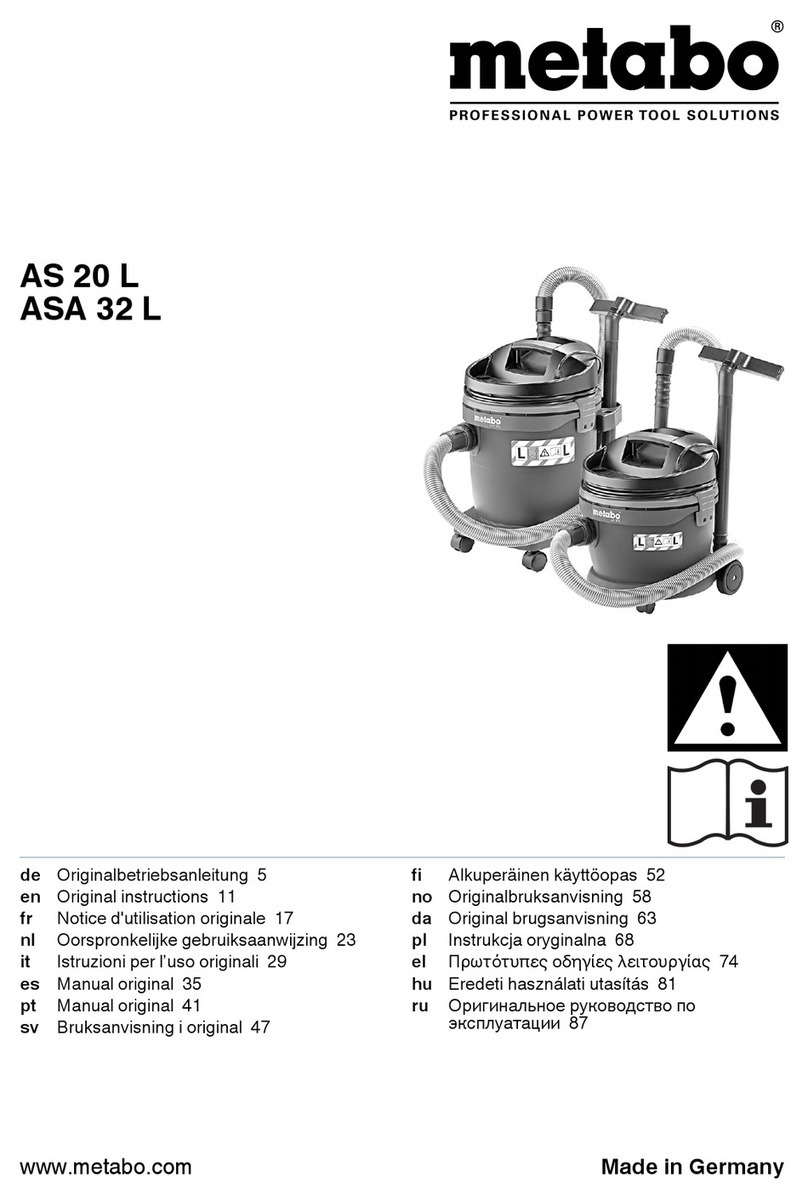
ENGLISHen
14
Original instructions
On our own responsibility, we hereby declare that
these dust extractors, identified by type and serial
number *1), meet all relevant requirements of
directives *2) and standards *3). Technical
documents for *4) - see page 3.
For UK only:
We as manufacturer and authorized person to
compile the technical file, see *4) on page 3,
hereby declare under sole responsibility that these
dust extractors, identified by type and serial number
*1) on page 3, fulfill all relevant provisions of
following UK Regulations S.I. 2016/1091, S.I. 2008/
1597, S.I. 2012/3032 and Designated Standards
EN 60335-1:2012+A11: 2014+A13: 2017,
EN 60335-2-69:2012, EN IEC 63000:2018
The vacuum cleaner is suitable for vacuuming
dust that is harmful to health (dust class M), in
accordance with EN 60335-2-69.
The vacuum cleaner is suited for the separation of
dry, non-flammable dust, non-flammable liquids,
wood dust and dangerous dust with workplace limit
values ≥ 0.1 mg/m³.
For occupational exposure limits and carcinogenic
materials, see the list of occupational exposure
limits or contact your local professional and
accident prevention associations for information.
The results of the dust test only refer to the
extraction or vacuuming of dry dust.
The vacuum cleaner is suitable for use as:
a) Industrial vacuum cleaner (IS) for vacuuming
deposited dust.
b) Dust extractor (ENT) for extracting airborne dusts
from material processing machines.
The vacuum cleaner is suitable for the demanding
requirements of industrial and commercial
applications e.g. in the areas of craft and trade,
installation work, construction, industry, workshops,
painting and plastering, joinery, woodworking. As
per EN 60335-2-69.
The vacuum cleaner is suitable for the vacuuming of
dust, solid materials (broken glass, nails etc.),
liquids of any kind with the exception of highly
inflammable, combustible liquids and material that
is hotter than 60 °C.
This device is not designed for use by persons
(including children) with physical, sensory or mental
disabilities, or with insufficient experience and/or
knowledge, unless they are supervised by a person
responsible for their safety, or have received
instructions on how to use the device by this person.
Pay attention to the country-specific regulations, as
well as the specifications of the material producer.
The product is intended for commercial use.
Dust containing asbestos must not be vacuumed.
Inflammable dust must not be vacuumed.
No inflammable or explosive solvents, material
saturated with solvent, dust that represents an
explosion hazard, liquids such as petrol, oil,
alcohol, thinner or material that is hotter than 60 °C
are allowed to be vacuumed. This would cause an
explosion and fire hazard! You are not allowed to
use the device in the vicinity of inflammable gases
or substances.
The user bears sole responsibility for any damage
caused by inappropriate use.
Generally accepted accident prevention
regulations and the enclosed safety information
must be observed.
Before using the device,
carefully read through and
familiarise yourself with all the
enclosed safety information and
the Operating Instructions. Keep all
enclosed documentation for future
reference, and ensure that you only
pass on your vacuum clean
together with this documentation.
Before using the device, the
user must receive information,
instructions and training material
on using the device and the
materials for which it is to be used
(including details on safe disposal
of the extracted material).
For your own protection and
for the protection of your
vacuum cleaner, pay
attention to all parts of the text that
are marked with this symbol!
Never allow children to use the
device.
Children should be supervised to
ensure that they do not play with
the tool.
1. Declaration of Conformity
2. Specified Conditions of Use
3. General Safety Information
4. Safety instructions for mitre
saws
